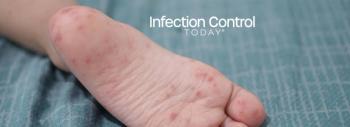
Omicron Makes Short Work of Delta to Become Dominant Variant in U.S.
The US health care system, already straining to contain a Delta spike, must now deal with Omicron. One expert predicts that Omicron will infect 20% to 30% of health care workers.
This is what exponential growth looks like.
When President Joe Biden addresses the nation tonight about the danger the Omicron variant of COVID-19 poses to public health, he will be armed with data to bolster his warning that “we are looking at a winter of severe illness and death for the unvaccinated—for themselves, their families and the hospitals they’ll soon overwhelm.”
The first case of Omicron in the United States
The data streaming in from state health departments include a long list—states where Omicron has been diagnosed—and a short list, states where is has not yet appeared. The latter list comprises 2 states: Oklahoma and South Dakota. As of this update.
Health care officials in the US and with World Health Organization warned that this would
He urged that people again utilize the nonpharmaceutical mitigation efforts that had been so relied upon before the launch of COVID-19 vaccines. “It’s not vaccines instead of masks,” Tedros said. “It’s not vaccines instead of distancing. It’s not vaccines instead of ventilation or hand hygiene. Do it all. Do it consistently. Do it well.”
Health officials worry that initial clinical investigations of Omicron that indicate that it has much
“Even if Omicron does cause less severe disease, the sheer number of cases could once again overwhelm unprepared health systems,” Tedros said last week.
Linda Spaulding, RN-BC, CIC, CHEC, CHOP, and a member of Infection Control Today®’s Editorial Advisory Board, yesterday laid out just how much strain health care professionals in the US feel in a
Spaulding said that the portion of the public that remains unvaccinated puts health care workers in jeopardy and forces them to work nonstop. “There is no one left to cover sick calls and vacations now. There are no vacations for nurses and doctors. There are no Christmas celebrations or New Year celebrations for these workers.”
Spaulding’s concerns were echoed yesterday by Michael Osterholm, PhD, MPH, director of the Center for Infectious Disease Research and Policy and the University of Minnesota, who
Some states, universities and businesses have implemented lockdowns in response to Omicron’s spread. Vaccinated individuals who want to gather for the holidays have been urged to rely on COVID-19 testing to ensure that they don’t endanger those most vulnerable. However, there doesn’t seem to be enough COVID-19 tests to meet a surging demand.
As Axios
In his speech tonight, Biden is expected to announce that the US will buy a billion rapid tests, and start mailing them to American households next month.
The desire of many Americans to gather over the holidays in part spurs this increased demand for rapid tests. Anthony Fauci, MD, the director of the National Institute of Allergy and Infectious Diseases and the top White House medical advisor,
Fauci said that “if you are vaccinated and boosted and are prudent when you travel, when you're in an airport, to be wearing a mask all the time. You have to be wearing a mask on a plane. Do not do things like go to gatherings where there are people who you do not know what their vaccination status is.”
Newsletter
Stay prepared and protected with Infection Control Today's newsletter, delivering essential updates, best practices, and expert insights for infection preventionists.





